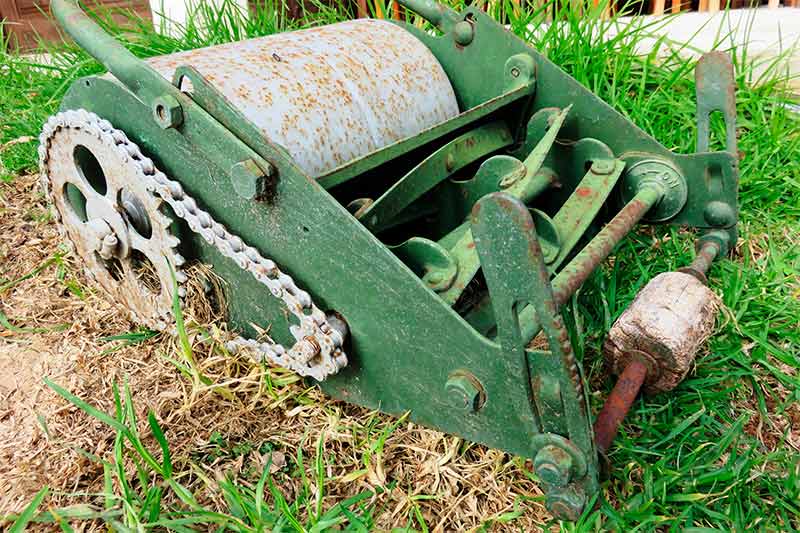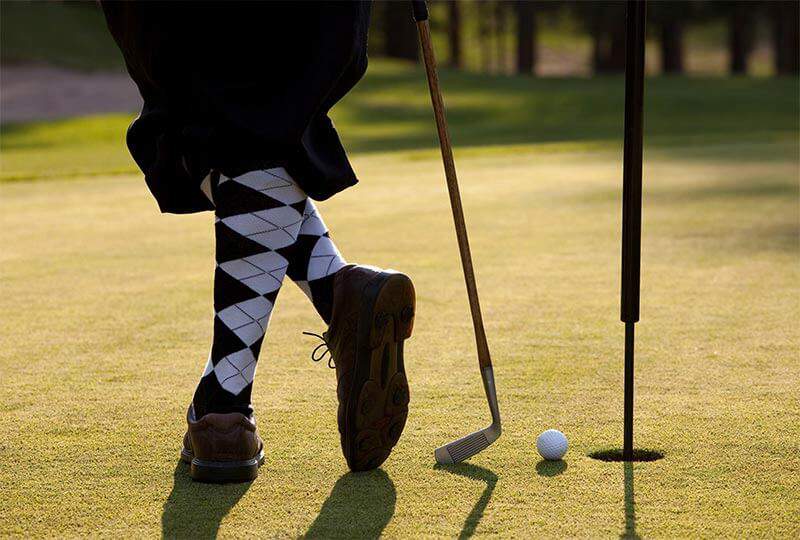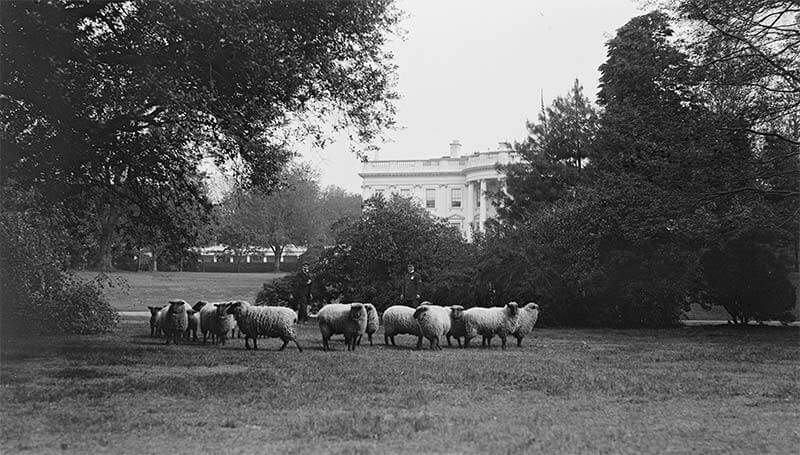The History of the American Lawn
Many Americans would find it hard to imagine a time when U.S. homes weren't surrounded by lush, green, manicured lawns. However, the use of cropped and beautifully maintained grasses is a relatively recent development in landscape history. The following milestones tell the story of how expansive green lawns — and the tools used to maintain them — became part of the American Dream:
1700s: Landscape designers in England and France premiered the concept of closely cut, well-kept grass areas in gardens. Drawing on the word "launde," which referred to a grassy woodland clearing, they coined the term "lawn" in the process.1 The amount of maintenance required by these new garden features kept them strictly in the realm of the rich. The only available lawn mowers were either livestock or scythe-yielding servants.
1806: U.S. President Thomas Jefferson, an avid horticulturist, was among the first to replicate European lawn styling in America at his Monticello estate.1,2 Other wealthy U.S. landowners followed suit, but most Early American yards stayed devoted to vegetable and herb gardens, or grazing animals.
1830: A textile engineer in England adapted a carpet cutter and invented the world's first lawn mower. Complicated animal-drawn and steam-powered mowers would come later, but the original mower was very similar to modern models.3
1868: In a glimmer of hope for servantless Americans yearning for closely cropped grass, the first three American lawn mower patents were issued.1 These exclusive machines laid the way for today's common turf tools, but mowers were still considered luxury items.
1871: The first lawn sprinkler was patented, complete with water pipes and rubber hoses, allowing homeowners to compensate for nature's lack of rain. This easy-to-use sprinkler, and the versions that followed it, were so efficient that community concerns about wise water use during droughts soon followed.1
1870s: Front yard produce gardens moved to the rear as maintained grasses took their place. New housing took cues from landscape trends in large-scale urban parks, using expansive lawns to separate homes from streets as suburban communities took form.1,3
1876: The U.S. Department of Agriculture (USDA) brought grass to the masses with lawn-growing displays at Philadelphia's Centennial Exhibition, the first official World's Fair on U.S. soil. Displays focused on how to start new lawns, but offered little information on ongoing care. With limited guidance and few grass choices, success was often short-lived. Some experts advocated starting lawns over every year.1,3

Lawn mowers have gone through many changes since their early years.
1880: Educational lawn care articles, predecessors of today's internet resources, became popular in leading U.S. magazines. Lawn and turf grasses took on added importance in USDA research programs as more Americans focused on the grasses around their homes.1
1888: New York became home to America's first golf course and its pasture-like playing surface. The idea of refining turf grasses took off as golf's U.S. popularity exploded and the number of golf courses soared.1 House-lined golf courses and golf course-like lawns became new American goals.

Golfers and the USGA have been driving forces in developing grasses for lawn and turf.
Early 1900s: Spurred by public interest and United States Golf Association (USGA) funding, the USDA increased its testing of potential lawn and turf grasses through the country's land-grant universities. Predecessors of modern Cooperative Extension System agents shared research results with the public.1
1918: World War I put America's lawn-improvement quest on hold as citizens turned yards into early Victory Gardens and invested resources in war efforts. President Woodrow Wilson delegated White House lawn maintenance to sheep, freeing the grounds crew for military service and raising wool for the Red Cross.1,4

Sheep took over White House lawn maintenance duties during WWI.
1938: The Fair Labor Standards Act made a 40-hour workweek the new U.S. norm. Many Americans devoted newly free weekends to lawn enhancement, maintenance and enjoyment.5,3 World War II soon sidelined those efforts, but post-war prosperity would accelerate lawn pursuits.
Late 1940s: Rotary power mowers surged in popularity and production, making large, well-maintained lawns possible for the country's growing middle class. Mower sales tallied 139,000 units in 1946. By 1959, sales would hit 4.2 million.3
1950s and 1960s: American suburbs grew in population, and their beautiful lawns grew in popularity, but most grasses were best suited to golf courses or pastures. Brooks Pennington Jr., founder of Pennington Seed, started focusing on grass seed for lawns and turf instead of agriculture, setting the course for his company.
Late 1960s: Pennington Penkote Seed Technology helped fuel the burgeoning lawn and garden industry, putting simpler, healthier lawns within homeowner reach. The new technology helped grass seed establish faster and stay healthier, and expanded the spectrum of grasses suitable for lawn use.

Beautiful, healthy, well-tended lawns remain part of the American Dream.
1970s and 1980s: USDA and university research programs adapted grasses for home lawns, and appropriate regional lawn grasses became more widely available. Sod farmers offered homeowners a choice between sod and seed, and lawn maintenance services grew in popularity.1
1990s and 2000s: Turfgrass breeding advanced quickly, giving homeowners attractive new options. NexGen Turf Research, Pennington's private research facility, targeted environmental concerns along with traditional beauty. Drought-tolerant, water-conserving grasses, such as Pennington Smart Seed, were born.
Through continuing research on grass seed and lawn care products, Pennington remains dedicated to producing the finest grass seed possible and helping your lawn take its place in history.
Sources:
1. Jenkins, Virginia Scott, The Lawn: A History of an American Obsession, (Washington D.C.: Smithsonian Institution Press, 1994), pgs. 2-16, 28-31, 45-52, 145-159.
2. Thomas Jefferson, Monticello, "Monticello's West Lawn."
3. Steinberg, Ted, American Green: The Obsessive Quest for the Perfect Lawn, (New York, New York: W.W. Norton & Company, 2006), pgs. 10-13, 26, 33.
4. The White House Historical Society, “Why did President Woodrow Wilson Keep a Flock of Sheep on the White House Lawn?"
5. Grossman, Jonathan, “Fair Labor Standards Act of 1938: Maximum Struggle for a Minimum Wage," The United States Department of Labor, June 1978.



